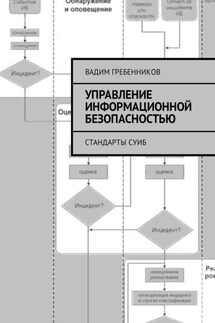Notes of an IT Architect - страница 11
* reuse of developed components,
* dynamics of closing technical debt.
It connects at the earliest stages of service approval by management, so that it can influence decisions regarding this service before they are made. Moreover, these are not technical decisions, but managerial ones, for example, timeframes and budget. If these decisions are made without it, then the architect will not have to decide the choice of the stack and the type of architecture, but choose what and to what extent he can implement. The architect also oversees the implementation of architectural solutions and architectural control when accepting the service. Usually, the service architect accompanies the service itself and at the reception, protects the architecture and carries out the acceptance of the work before the customer at the acceptance tests.
A service architect is a role, while by position he can be a developer, a database engineer, and a business analyst and director. Usually, when a direction is being formed, this role is played by the forming director. Later, when individual services are known, he connects either technical specialists with high communication skills, or a business analyst with an assistant in the form of leading technical specialists of this service.
Most often, this role is assumed by a technical specialist, since it is practically impossible for non-technical specialists to build up a technical base so that they can descend from the upper layers of abstraction to the lowest and see technical problems and bottlenecks. It is the ability to switch between different levels of abstraction and work effectively at them that is the key skill of an architect. But technicians use their communication skills to attract technicians where they lack expertise, which technicians are not used to doing. This is going away because the technicians do not have enough resources to cover everything themselves. Out of habit, when they had one task in their professional area 1, they plunged into it to solve it, in the role of an architect, they cannot become specialists of all technical profiles and do everything themselves, there are not so many resources for this and from them this and not required – the team and the specialists involved in the project will implement it. The downside is that technical specialists, by virtue of the ability to delve into the problems of each component, can take this into account, but this is possible on small projects, on larger projects it is solved by involving experts and corporate architects practitioners for auditing, following standards, which is familiar to managers… Another difference is the understanding of business requirements, in particular in the financial area, timing and integrations. If technical specialists, as a rule, do not have problems with integrations, then non-technical ones, on the contrary, shifting them to others, they may find themselves with the fact that it is difficult to put everything together. On the other hand, if you have strict financial and timing requirements in custom development, the project can fail, since the customer can refuse it and still demand a forfeit, and due to weak communication skills – at the end of the project. It is also observed when an architect defends a project from directors, especially from a financial one, when the architect cannot justify the choice of the technology he likes, but expensive, when in this situation there are no obvious objective grounds, for example, Java instead of PHP, Oracle instead of MySQL, micro-services instead of a monolith, a self-written solution instead of a CMS for a small online store.








